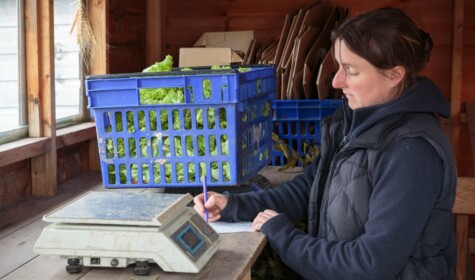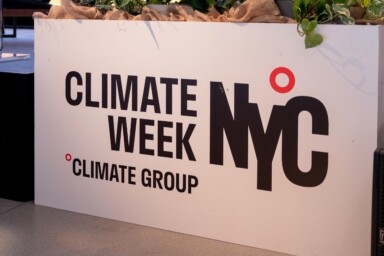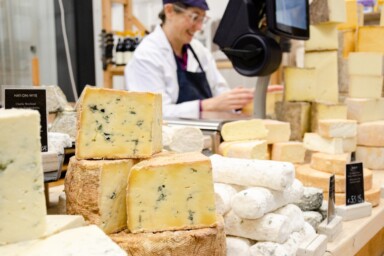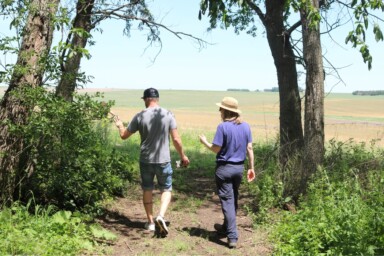How can measuring sustainability on farms help us to understand and value the produce and services that farmers deliver? In this new series, we explore how metrics can inform the transition to a more sustainable food and farming system, and we meet some of the people who are leading the way when it comes to producing nutritious food that supports the health of people and planet.
The adage goes that ‘you can’t manage what you can’t measure’. Most land managers and farmers would, at least to some extent, agree, whether the basis for that measurement is intuition, day-to-day observation, or the systematic collection of data.
But how can we quantify and measure things like clean air, water, healthy soil or positive human health? Trying to place a cash value on nature and health is, of course, an almost impossible quest and without caution can lead us down a slippery slope of commodifying and simplifying systems that are wondrously complex. Yet, without some means of assigning monetary value to nature’s gifts or ‘services’, our extractive consumer economy threatens to continue along its trajectory of environmental destruction.
This is why measuring and valuing sustainability is so central to the work of the Sustainable Food Trust (SFT). This is manifested in two, inextricably linked projects that are at the core of the SFT’s mission – the ‘Global Farm Metric’ and ‘True Cost Accounting in Food and Farming’.
Without measuring and valuing what farmers grow and how it is produced, they cannot be rewarded financially for the ‘public goods’, or ‘positive externalities’ as economists call them, that they deliver – whether that’s nutritious food, healthy soil, or flourishing habitats for wildlife. We need common, consistent and robust measurement to enable and underpin a shift in the balance of financial advantage, moving away from extractive, often intensive, methods of food production towards those which genuinely deliver for nature, climate and health.
Right now, our work in this area feels more important than ever. Suddenly, in the last few years, sustainability has shifted from being something of a side issue to a central topic in almost every boardroom or government office around the world. This has led to commitments and claims of varying ambition, particularly around so called ‘regenerative agriculture’, leaving many sceptical or wary of how authentic these proclamations of intent really are.
In my view, the fact that these statements are being made and plans put in place, regardless of whether or not they’re currently realistic in terms of scope or timeframe, is hugely encouraging. It shows us that sustainability is rising to the top of these organisations’ agendas – either because their future business models will be at risk if they don’t protect the natural and social resources that they rely upon, or because it is an issue of customer expectation and boardroom voting – likely both.
The role of measuring and valuing in the transition of our food system towards sustainability is therefore four-fold:
Firstly, and arguably most importantly, it can directly empower farmers to understand the point from which they are starting and how they can progress towards ensuring the sustainability of their whole farm. This is core to the mission of the Global Farm Metric (GFM), which has been, and will continue to be, designed with the help of farmers to ensure the framework is meaningful to those on the ground, whilst also useful to the people who need to use the information further along the chain.
Secondly, a common measurement and subsequent valuation of ‘externalities’ should underpin governance for a new financial framework which rewards farmers for doing the right thing. We are currently working with food companies, the financial community, insurers and government to unpick how future finance can flow through to farmers in a fair and joined up way.
Thirdly, the use of common outcome measures will be critical in enabling transparency of supply chains. In turn, this will inform future communication to citizens on the relative sustainability of the food products that we purchase, allowing all of us to understand the impact of the foods that we are eating and to vote for the farming systems that we want by directing our spending accordingly.
And finally, we need these metrics to hold everyone to account. Common, robust measurement and reporting is the antidote to greenwashing. If all companies and governments are required to use the same metrics and language to report on change, they will not be able to get away with empty commitments or a failure to deliver on targets.
In the coming issues of our newsletter, we will explore some of the central facets of sustainable farming systems, including soil health, animal welfare, biodiversity and social capital, and consider how each of these might be measured and valued. We’ll also be speaking to farmers who are driving positive change in these areas and look at how metrics can be used to ensure that sustainable agriculture becomes the most profitable option.
If you would like to learn more about the Global Farm Metric please see the GFM website here or get in touch with the GFM team (info@globalfarmmetric.org.
To find out more about our work on true cost accounting, please see our website here or get in touch with the SFT team (info@sustainablefoodtrust.org).
This article coincides with the release of the latest iteration of the GFM framework (GFM 1.1) which has been updated by our research team following consultation with the GFM coalition members and farmers’ working group earlier this year. The GFM team are also currently recruiting farmers for our 2023 trials – if you are interested in getting involved and helping us shape the initiative, please do sign up here!







